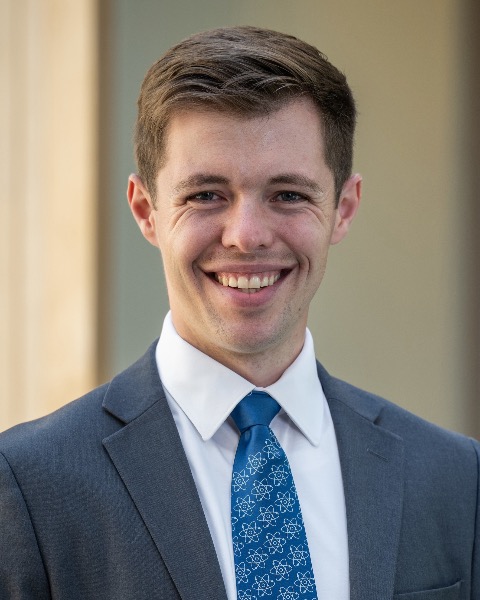Nonproliferation and Arms Control
Poster Session B
(POS-49) Measured and Simulated Rossi-alpha of the Bare Rocky Flats Hemishells
Tuesday, August 26, 2025
3:50 PM - 5:10 PM EDT
Location: Capitol Ballroom
Flynn Darby (he/him/his) - University of Michigan
Jesson Hutchinson - Los Alamos National Laboratory
Michael Hua - University of Michigan
Juliann Lamproe - Los Alamos National Laboratory
Geordie McKenzie - Los Alamos National Laboratory
Robert Weldon - Los Alamos National Laboratory
Shaun Clarke - University of Michigan
Sara Pozzi - University of Michigan
Jesson Hutchinson - Los Alamos National Laboratory
Michael Hua - University of Michigan
Juliann Lamproe - Los Alamos National Laboratory
Geordie McKenzie - Los Alamos National Laboratory
Robert Weldon - Los Alamos National Laboratory
Shaun Clarke - University of Michigan
Sara Pozzi - University of Michigan
University of Michigan

Flynn Darby
Graduate Student
University of Michigan
Ann Arbor, Michigan, United States
Submitting Author(s)
The Rossi-alpha method is a non-destructive technique that quantifies fission chain kinetics in special nuclear material by calculating the prompt neutron decay constant (α) or its inverse, the prompt neutron period (1/α). We measured a subcritical assembly of highly enriched uranium metal (93% U-235) hemi-shells, also known as the “Rocky Flats” shells, stacked to form a hollow spherical configuration. The assembly, with a total mass of 21.95 kg, has an effective multiplication factor (k-eff) of 0.74 based on MCNP6.2 simulations and is driven by a centrally located Cf-252 neutron source. Measurements were conducted using the OSCAR array, a three-by-four array of 5.08 cm × 5.08 cm trans-stilbene organic scintillators, positioned 166 cm from the center of the uranium assembly. The Rossi-alpha method was applied to the neutron detection times to calculate the forward time difference distribution. We also simulated the neutron response using MCNPX-PoliMi paired with MPPOST and compared the measured results to the experimental results. Fitting these distributions produced prompt neutron period estimates of 10.4 +/- 1.09 ns (measurement) and 12.77 +/- 1.43 ns (simulation). We provide the first validation of simulated detector response for our system measuring the Rocky Flats shells. Future work presented in our poster will extend this analysis by simulating and comparing the prompt neutron decay constants for all measured configurations of the Rocky Flats shells (13-49 kg, k-eff of 0.64-0.95), evaluating the Rossi-alpha method for a wider range of subcritical multiplication factors.
